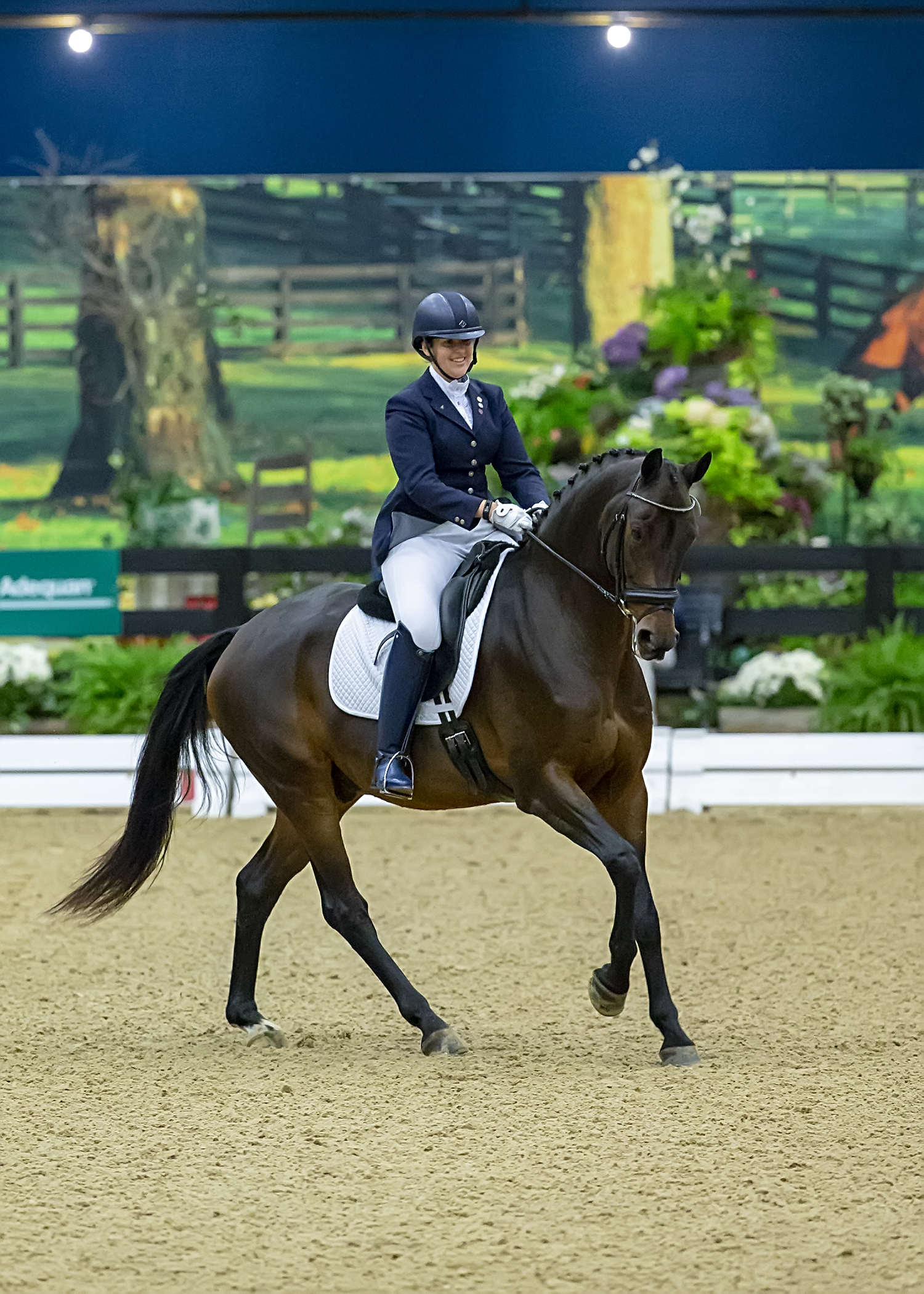Each day you ride your horse you are training him. The work should improve his way of going, but incorrect work will have the opposite effect. Correct dressage training is all about the details. You can improve your horse’s throughness by paying attention to details in your transitions, in the walk work and in correct geometric figures.

© Susan J. Stickle
USDF Definition of Throughness: State in which the rider’s aids/influences go freely through to all parts of the horse, from back to front and front to back (e.g., the rein aids go through to reach and influence the hind legs).
Ride Your Transitions
Transitions are important because they are a huge part of what we do while we are riding. If you go through a Training Level test and count the number of transitions, it’s alot. There are so many scores there. Each transition you ride every day you should ride as well as possible. I want to say ride for a 10, but realistically if you work for an 8 you will still improve your throughness.
For example, if you are walking and you want to do some work in the trot, don’t jump right into trot without focusing on the transition. Focus on these qualities:
• Is the horse in front of the leg and reactive when you ask for the transition?
• Is the horse balanced longitudinally or is he on the forehand?
• Is he straight or are the shoulders or haunches out of alignment?
• Confirm that the first step of the trot is your best trot.
Demand that correctness from the horse through your attention to detail in every transition. You’ll make the horse more rideable, develop him in balance for self-carriage and build his general strength. The more transitions you do correctly the more through the horse will be.
Focus on the Walk
We walk a lot during a ride. You might not even realize how much you walk, but add up the warm-up, cool-down and all the breaks in between. It is one of the three basic gaits, and you have many minutes to practice improving the walk every ride.
A common pet peeve of mine is what I call the “splat transition.” That is when a student goes from working well and she begins a walk break and “splat,” everything is gone. The rider forgets about the rhythm, the self-carriage, the contact and the flexion as she falls into the walk. She starts wandering around, maybe chatting with a friend. When you walk, you should walk as you would walk in a horse show. Medium walk, free walk, collected walk—pick a walk and ride it correctly instead of riding an unrecognizable gait. General awareness that you need to walk as you do in the test will make the walk in the test (which always has a coefficient) so much easier.
However, walking well is not just for riders preparing for a show. After the walk break, the horse should feel better. The break is to let the horse relax, stretch his muscles and catch his breath. He should still be connected and working through his body. If the horse doesn’t feel better after the break, that’s an indication that you need to spend more time in the break or work on the quality of the walk.
Correct Geometric Figures
Ask yourself how many corners you ride in a day when you are schooling. I have never counted, but it’s a lot! Dressage is about repetition: If you ride only one out of 10 corners correctly, you will find corners difficult in a competition setting. This goes for all school figures as well. Every circle has four circle points that you should be able to find if you know the size of the arena and where the figure is. Watch that the geometry is correct, that you’re not riding an “amoeba” but a proper circle connecting the points.
You want the horse to improve when you use your school figures. Say you ride a 20-meter circle to the left, but the horse is always falling in on his left side and you are missing the circle points for a correct circle. You know you must fix the suppleness issue because the difficulty with the correct circle line indicated the root of the issue. The horse is leaning and falling in and you need to correct him by pushing him off the inside leg out onto the circle line. If you don’t notice you are missing the circle points, you probably won’t notice that the horse is falling in on the circle.
Details in dressage are so important because they help you understand and improve the basics and progress with your training. If you don’t notice the details, you might miss some of the big picture and that could slow your progression. Details are also the key to success in the show ring. Each test is scored by individual movements. If transitions are not ridden well, the corners are ambiguous or the walk is mediocre, your score will be impacted as well as the overall impression of the submission of your horse.
Reese Koffler-Stanfield is a USDF FEI Certified Instructor and a USDF bronze, silver and gold medalist with her gold and silver Freestyle Bar. She is the owner and head trainer at Maplecrest Farm in Georgetown, Kentucky. She is also co-host of the “Dressage Radio Show,” which is the official podcast of USDF.











